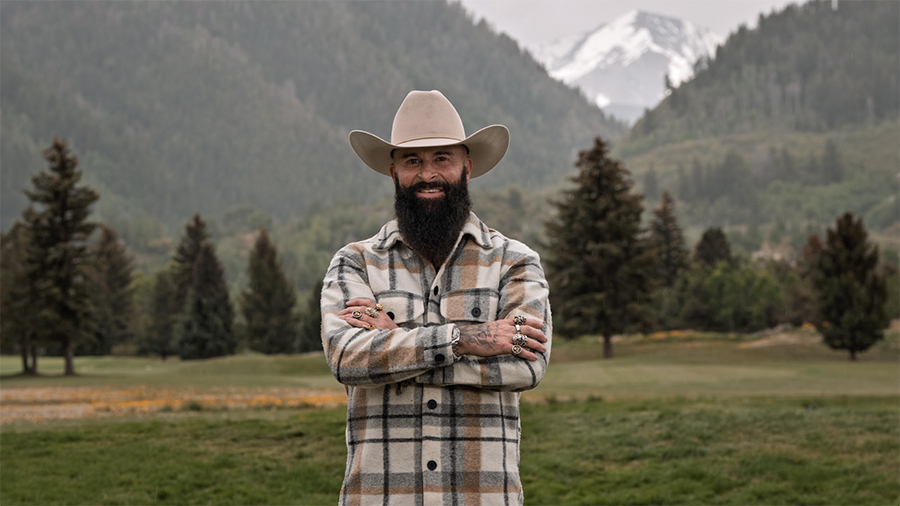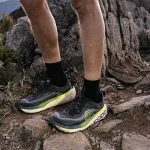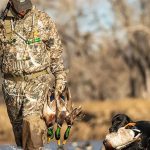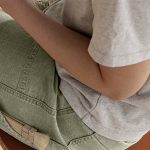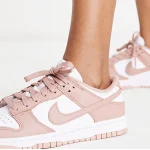In early June, Sport Obermeyer announced the appointment of its new CEO, Kris Kuster, who will be responsible for transforming the iconic skiwear brand into a year-round premium outdoor sports company. Kuster will receive support from founder and president, 105-year-old Klaus Obermeyer, who is taking a step back after 78 years of running the brand.
Klaus Obermeyer, a member of the U.S. National Ski and Snowboard Hall of Fame and the Sporting Goods Hall of Fame, will remain an active Board member and president of Sport Obermeyer. Kuster, formerly North American general manager for Mammut and CEO of X-Bionic, joined Obermeyer as a consultant last fall and was officially elevated to CEO on April 1.
Kuster spoke with SGB Executive about the opportunities he sees for Obermeyer in targeting female hunters and anglers, as well as plans to introduce fashion-forward capsules, including those connected to Obermeyer’s hometown of Aspen, the revamp of its online presence and the impact of tariffs. Kuster also talked about the impossibility of replacing Klaus Obermeyer.
SGB Executive: What is it like to replace Klaus Obermeyer?
Kris Kuster: You cannot replace Klaus Obermeyer! He’s a legend in the ski industry and has big shoes to fill. Even at 105, we talk every week. I go down to his ranch, and we have dinner together. We often discuss business, but also share our upbringing. He was brought up in the mountains in Bavaria, very close to the Swiss border, and I grew up in Switzerland in Zermatt and Dinkelberg. I’m a mountain guy. Although we’re over 50 years apart, our upbringing was remarkably similar. We laugh about the fun stuff we did as kids. Of course, growing up, skiing and racing connect us. I see him as a partner more than someone I’m replacing.
SGB: Will Klaus still take an active day-to-day role at Obermeyer or is he settling into retirement?
Kuster: He’s a force of nature; his mind is still so sharp. We have business talks when I’m in Aspen, and he gives me advice and always says, “You got to create win-wins,” and “You got to bring people outside again, more than ever. We need people to do sports and be healthy and get them away from their phones.” However, while his role at Obermeyer is on the Board, he remains very engaged in the business, and what keeps him so vigorous is that he wants to see his life’s work continue. I have to be diligent to keep that legacy going. It is a big responsibility and honor to take it on now and bring it to the next level.
SGB: What opportunity do you see for Obermeyer?
Kuster: The heritage is insane! Obermeyer is likely the first authentic ski apparel brand, particularly for women. The brand always focused on women because Klaus always said women are colder. They need warmer gear to enjoy the outdoors. People also forget how many innovations Klaus brought to skiing. He built the first down jacket. He made the first ski stoppers. He has an engineering background and continues to be passionate about building things.
I first see a huge opportunity to tell the Obermeyer story. Cary Grant, the actor in the ’60s, wore their first down jacket. They paid him $450, which would be a lot of money today. But there are many rich stories throughout Klaus’ life and the Obermeyer legacy, many of which are deeply connected with Aspen. He’s very connected with Aspen because he was one of the city’s founders. He told me there were seven ski instructors when he arrived in Aspen in 1947, and now there are 1,500. He played a significant role in transforming Aspen into a highly aspirational destination and one of the world’s most renowned ski resorts.
The brand is still wholly owned by Klaus Obermeyer. So, we have to get better at telling those stories to the public to build that community and the enthusiasm he still has for skiing.
SGB: What’s driving the push to become more of a year-round brand and less reliant on ski?
Kuster: Ski will always be at the heart of the brand, but participation in downhill skiing is declining in the U.S. due to the prices and the sport becoming too exclusive. We are pivoting expansion into shoulder season and other ski-adjacent off-season sports. Climate change is also making ski seasons shorter and shorter, so we don’t have a choice but to become a year-round outdoor sports company. It will be very tough to survive solely on a ski business.
SGB: Why do you see an opportunity to reach women hunters and anglers, and why the focus on women?
Kuster: We want to be very female-forward. Approximately 65 percent of our current sales are to women, about 25 percent are to children, and our men’s business accounts for a small percentage. While many brands branch out into yoga and fitness to reach women outside the winter, statistics show that the fastest-growing sports for women are hunting and fishing. Women ski because it’s a technical sport, and that’s true of fishing and hunting as well. They’re also both mountain sports, and we’re a mountain brand. We were born in the mountains, and we will continue playing in the mountains. We want to stay true to what we are. There are not many competitive brands in the sportsman’s space that focus entirely on women. There are plenty of male brands that make a few women’s pieces, but we currently deliver authenticity with women even more than with men. We aim to create products designed by women for women in these male-dominated sports, extending our season into hopefully more summer and fall products.
SGB: How did you envision a connection between women skiers and women who hunt and fish?
Kuster: We just hired a designer. She’s from Sun Valley and is a great skier who also hunts and fishes, as that’s the environment she grew up in. Hunting and fishing are huge with women in Aspen. I don’t know where the barrier was, but now these barriers are coming down, and women are embracing year-round mountain activities. We want to empower these new movements.
SGB: How did Klaus react to the hunt & fish focus?
Kuster: He thought it was a great idea right away. He said, “I know a lot of huntresses.” His daughter, Susie, is also very outdoorsy and into hunting. There’s a large community out there, especially in bow hunting, which is also a very technical field.
SGB: Have you received any pushback from dealers who think of Obermeyer foremost as a ski brand?
Kuster: No. The data shows where female consumers participate, and we want to be present. If the biggest growth in participation is in hunting and fishing, then we follow the numbers and go there. That’s where the Swiss in me comes out. I’m very pragmatic about these things. You’ll also see it will be very stylish and good-looking. For example, you’ll see innovative leggings for hunters that will still be very tough. We’ll bring a lot of new energy to it because we’ve been making women’s pants for literally 78 years, and we’ll bring that knowledge.
SGB: Obermeyer is also planning an “everyday” collection for Spring/Summer 2026. Can you elaborate on those plans?
Kuster: That’s the hunting and fishing capsule. Versatility is the key word for me. People may use the range for hunting or fishing, but it could be for a dog walk. Dog walking is most likely the most popular outdoor activity in the United States and Canada. Every other family has a dog, and you have to go outside. It will keep you dry, warm and comfortable while also being stylish and versatile. Who knows? People might use it to go skiing!
SGB: What are your plans for the distribution of the hunt & fish product?
Kuster: Specialty hunt and fish shops would be an opportunity. It’s also a big play to launch our direct-to-consumer business. But it won’t change our core distribution. We have strong relationships across specialty retail and with the big guys like REI. Scheels, where we already create SMUs for winter product. It would be a great opportunity for the hunting and fishing collection. Al’s Sporting Goods in Utah could be a good one as well. The distribution change will be more broad since we’re primarily selling in the U.S. We do very little in Canada, and we’re going to start pushing into Canada. Then, we’ll evaluate Japan, China and Europe.
SGB: Obermeyer is also planning more fashion-forward capsules for this fall and featured on its website. Can you tell us about that?
Kuster: It’s a Fall/Christmas capsule inspired by Japanese race cars. It’s like a lifestyle resort range with cool T-shirts and a mechanic suit, like a catsuit, but very, very racy. We can take more risks as a privately held company. And it all connects back to Klaus. He loves flying and racing. The cars have “47” as their number to mark the year Obermeyer was founded. We’re also planning a collection with Aspen artists, such as Jesse Belle Deutschendorf, John Denver’s daughter. Aspen has a huge art community, and we want to immerse ourselves in that more.
SGB: What changes are planned for the core skiwear business?
Kuster: I want to be a bit more provocative on the hero or concept products and have innovations. We’re talking again to Gore-Tex and could go a little more modern, like with shells. We all know modern athletes are all about layering. But we will guard the core like the diamond it is. We will not change what the retailer needs and wants ever in skiing because it works. Don’t change a winning horse.
SGB: What are your plans to jumpstart DTC (direct-to-consumer) growth?
Kuster: We only launched our e-commerce platform three years ago, so we were late to the game and needed to accelerate our efforts to catch up with the industry. Currently, it’s about 5 percent of our business, whereas many of our competitors are at 20 percent to 30 percent DTC. We’re in discussions to hire a new director with industry e-commerce experience to help us revamp our DTC platform and business. We’re going to sharpen our focus and make it clear what we stand for, fueling the brand more with emotions so it’s not just always activity-based.
We have all these stories with Klaus, Aspen and the mountains, which we will use to elevate our appeal. It’s not a complete rebranding, just sharpening our image. We’ll go dark for probably a month this summer and completely shut down DCT, rebuild everything, and then come back with a uniquely retro-modern look. The biggest showcase window in the world is your website, so it has to start there.
SGB: How is Obermeyer adjusting to tariffs?
Kuster: Klaus decided to pull out of China three years ago, so we have almost no production exposure there except for a couple of fabrics. That’s a big advantage Obermeyer has. We do nearly everything in Vietnam. However, even Vietnam has a 10 percent tariff increase, which comes on top of our industry’s already small margins. We want to keep Obermeyer as an affordable brand that looks luxury because not everybody can afford Bogner, Moncler or Goldbergh. So, we slightly increased our pricing. In kids, it’s about 3 percent on average, and in adults, it’s between 5 percent and 7 percent. We split the increase with the MSRP, but then we also provided additional margin to retailers, paying it forward on the wholesale front. We want to remain competitive in pricing.
Image courtesy Sport Obermeyer/Kris Kuster

